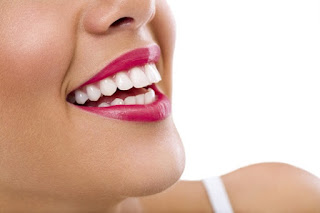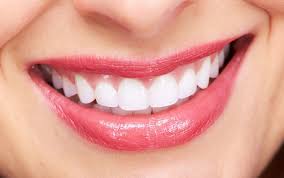How to Care for Your Mouth After Tooth Extraction: Dubai Dentists’ Advice
Tooth extraction, whether due to severe decay, damage, or orthodontic needs, is a common dental procedure that requires careful post-operative care. Proper aftercare is crucial to ensure a smooth recovery and prevent complications. Tooth Removal Dubai, where dental practices are advanced and patient-centered, following the right guidelines can make a significant difference in your healing process. This article provides detailed advice on how to care for your mouth after tooth extraction, based on insights from Dubai’s leading dentists.
1. Immediate Post-Extraction Care
Managing Bleeding and Swelling:
Bite on Gauze:
- Description: After the extraction, your dentist will place a gauze pad over the extraction site. Bite down gently but firmly on the gauze to help form a blood clot.
- Duration: Keep the gauze in place for 30-45 minutes. If bleeding persists, replace the gauze with a fresh pad and continue biting gently.
Control Swelling:
- Description: Swelling is a normal part of the healing process. Applying an ice pack to the outside of your face near the extraction site can help reduce swelling.
- Duration: Use the ice pack for 15-20 minutes at a time, with 20-minute breaks in between, for the first 24 hours.
Rest and Recovery:
Avoid Physical Activity:
- Description: Resting and avoiding strenuous activities help minimize bleeding and facilitate healing.
- Duration: Limit physical activity for at least 24-48 hours after the extraction.
Keep Your Head Elevated:
- Description: When lying down, keep your head elevated to reduce blood flow to the extraction site and minimize swelling.
- Duration: Use extra pillows to keep your head elevated while resting or sleeping.
2. Oral Hygiene and Care
Maintaining Cleanliness:
Avoid Rinsing for the First 24 Hours:
- Description: Rinsing your mouth immediately after the extraction can dislodge the blood clot. Avoid any rinsing or spitting for the first 24 hours.
- Duration: After the first 24 hours, you can gently rinse with a saltwater solution.
Gently Brush Your Teeth:
- Description: Brush your teeth carefully, avoiding the extraction site to prevent irritation. Use a soft-bristled toothbrush.
- Frequency: Continue brushing twice daily but avoid the extraction site until it has healed sufficiently.
Mouth Rinses:
Use Antimicrobial Mouthwash:
- Description: Begin using an antimicrobial mouth rinse 24 hours after the extraction to reduce bacteria and promote healing.
- Frequency: Rinse twice daily with a non-alcoholic mouthwash or as directed by your dentist.
Saltwater Rinses:
- Description: After the initial 24 hours, rinsing with a saltwater solution can help keep the area clean and soothe the extraction site.
- Recipe: Mix 1/2 teaspoon of salt in a cup of warm water and rinse gently.
3. Diet and Hydration
Eating and Drinking:
Choose Soft Foods:
- Description: Eat soft foods that require minimal chewing to avoid disturbing the extraction site. Examples include yogurt, mashed potatoes, and soups.
- Duration: Stick to soft foods for at least a few days or until your dentist gives you the go-ahead to resume normal eating.
Avoid Hot Foods and Beverages:
- Description: Hot foods and drinks can dissolve the blood clot and increase discomfort. Stick to cool or room-temperature foods.
- Duration: Avoid hot items for at least the first 48 hours.
Drink Plenty of Water:
- Description: Staying hydrated helps your body heal and keeps your mouth moist.
- Frequency: Drink water regularly, but avoid using straws as the suction can dislodge the clot.
Avoid Alcohol and Carbonated Drinks:
- Description: Alcohol can interfere with the healing process, and carbonated drinks can dislodge the clot. Avoid these until the site has healed.
- Duration: Refrain from alcohol and carbonated drinks for at least 48 hours.
4. Pain and Medication
Managing Discomfort:
Take Prescribed Medications:
- Description: Your dentist may prescribe pain relievers or antibiotics. Take these medications exactly as directed.
- Frequency: Follow the dosage instructions carefully to manage pain and prevent infection.
Use Over-the-Counter Pain Relievers:
- Description: If prescribed medications are not sufficient, you can use over-the-counter pain relievers like ibuprofen or acetaminophen.
- Frequency: Use as directed to manage discomfort, but consult with your dentist before combining with other medications.
Avoid Certain Medications:
- Steer Clear of Aspirin:
- Description: Aspirin can increase bleeding and should be avoided unless specifically recommended by your dentist.
- Duration: Avoid aspirin for at least a few days post-extraction.
5. Monitoring and Follow-Up
Watch for Complications:
Signs of Infection:
- Description: Be alert for signs of infection, such as increased pain, swelling, redness, or discharge of pus.
- Action: If you notice any of these symptoms, contact your dentist immediately.
Dry Socket:
- Description: A dry socket occurs when the blood clot becomes dislodged, exposing the bone. Symptoms include severe pain and an unpleasant taste or odor.
- Action: Contact your dentist if you suspect a dry socket for prompt treatment.
Follow-Up Appointments:
Attend Scheduled Visits:
- Description: Follow-up appointments are important to monitor the healing process and address any issues.
- Frequency: Keep all scheduled appointments to ensure proper recovery.
Discuss Any Concerns:
- Description: If you have any concerns or questions about your recovery, discuss them with your dentist during your follow-up visits.
- Action: Your dentist can provide additional guidance or adjustments to your care plan if needed.
FAQs
1. How long does it take for the extraction site to heal completely?
Initial healing typically takes one to two weeks, but complete healing of the bone and gum tissue can take several months.
2. Can I smoke after a tooth extraction?
No, smoking should be avoided as it can interfere with healing and increase the risk of complications such as dry socket.
3. When can I resume normal brushing and flossing?
You can resume brushing and flossing after 24 hours, but be gentle around the extraction site. Avoid flossing near the extraction site until it has healed.
4. What should I do if I experience severe pain after the extraction?
Severe pain beyond the expected discomfort may indicate a complication. Contact your dentist for evaluation and management.
5. Is it normal to have a bad taste in my mouth after extraction?
A bad taste can be normal due to the healing process, but if it’s persistent or accompanied by other symptoms like swelling or fever, contact your dentist.



Comments
Post a Comment